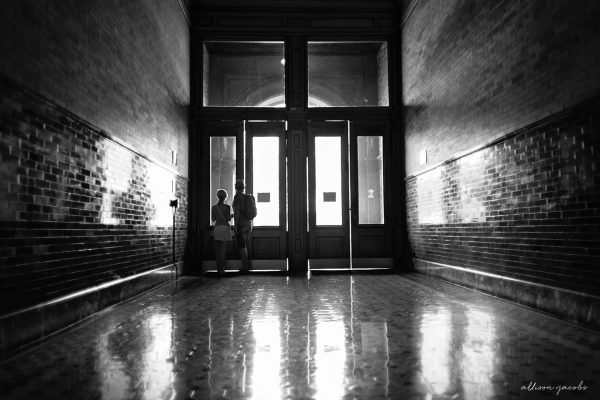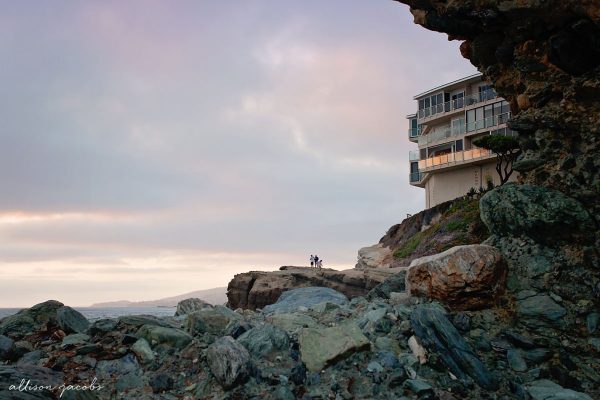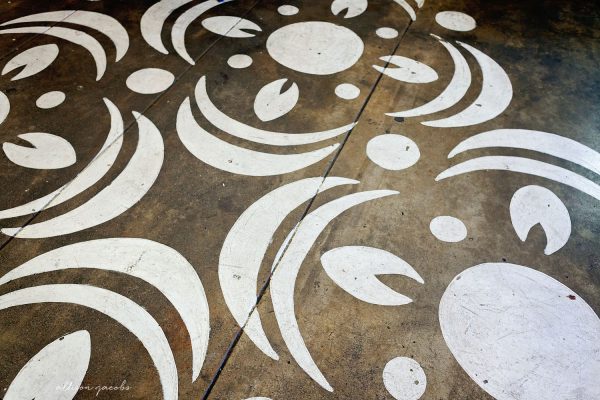Composition is one of the main building blocks of a great image. There are many ways to compose an image (and many ways to break the rules once you master them). These tried and true compositions are easy to execute and help elevate you images.
Read more: 5 Tips for Shooting with Composition in Mind
-
No.01Rule of thirds
When you begin to study and learn about photography, Rule of Thirds is one of the top compositions that you will probably see being taught. It’s popular for many reasons, it is fairly simple to successfully compose your image using ROT and it is an effective compositional technique. When you are composing your photo you place the subject (or a focal point of the subject) on one of the 4 points where the lines intersect and click the shutter.
When you place your subject on one side of the frame, it allows space for the viewer to continue looking over the rest of the frame and helps create some movement, especially if your subject is in movement or potential movement (think about a person running or a car driving and where you would place each in ROT).
You can also enhance the ROT technique by being thoughtful about what side of the frame you place your subject on. If your subject is looking into the frame then the viewer will follow the subject’s gaze into the frame. If your subject is looking away from the frame or out of the frame then this creates tension and sends your viewer’s gaze following the subject right out of your frame.
There isn’t a correct or incorrect way to create this composition depending on the emotion you are wanting to create. It is just something to be aware about when you are setting up your shot. In post processing, you can use the overlays in Lightroom & Photoshop to make sure that your composition is on target and crop the image if necessary.

-
No.02Framing
Framing is a great way to highlight your subject using things in the environment like doorways, window panes, bridges and tree branches. This is a great technique to keep your viewer focused on the subject in the photo. It can also be a fun challenge to be on the lookout for natural frames in your environment as you go through the day.
Look for geometric shapes that you can use to frame your subject and don’t forget to look for reflections too. This can be effective if you are lucky enough to be shooting somewhere like a downtown with buildings and reflective windows or surfaces that can provide framing for a reflective self-portrait.
You have the opportunity to get really creative with framing so keep an eye out for elements you can include in the foreground of your image that could potentially frame your subject. This will help you create layers in your images which will make them stronger.

-
No.03Leading lines
Leading lines are used to draw the viewer’s eye to the subject in your photo. When using leading lines you will place your subject at the end of the line and use it as a pathway to the subject guiding your viewer through the photo. You can use leading lines strategically to direct the viewer’s attention by placing the lines diagonally or using a curved line or to divide the photo symmetrically straight down the center.
Some examples of leading lines can be both man made and found in nature:
Roads
Walkways
Bridges
piers (not limited to these things)
Rivers & streams
Shorelines
Formations like in sand or rock
-
No.04Patterns
Patterns are a repetitive use of elements in your photo. Like framing, these can be found patterns as you go about your life or they can be created (like in still life & macro photos). Using patterns as a compositional technique adds harmony and rhythm to your photo. You can look for patterns of lines, color, light, shapes, form, curves, objects.
Really, once you start looking for patterns, you will see them all over. If you enjoy still life photography, this is a great compositional technique to incorporate into your photos You can also look for breaks in a pattern which can be an additional tool to use to enhance your composition. An example of this might be a photo of 3 rows of blue flowers with one yellow flower in the middle of one of the rows.

-
No.05Fill the frame
Have you ever gotten home from a vacation where you thought you were focused in on a subject only to realize you weren’t close enough? That’s one reason why this is a great technique. There is that saying if you think you are close enough, take another step forward (or something like that). When you fill the frame with your subject you are able to clearly showcase your subject. This is also a great way to show off details in your photos.
Think about the impact of a butterfly that fills the frame or a portrait where you feel like you can look right into their eyes. You can fill the frame by getting closer to your subject or when that isn’t possible using a telephoto lens like the Canon 70-200mm to bring you closer.
This is a good composition to keep in mind when you are traveling and often focused on the bigger picture. f you remember to fill the frame every so often then you will come home with those wonderful detail photos to enhance your storytelling.

One really helpful way to learn about composition so that creating strong composition in your photos comes naturally is to practice. It really is that simple. I recommend picking one type of composition and working on it daily for at least a week. Make a fun personal photography project out of it by trying to use that compositional technique as much as possible. Don’t use this time to try to create portfolio worthy images and instead just enjoy shooting.
Read more about composition:
– 7 Everyday Places to Find Leading Lines
– Photography Composition: Getting Diversity in Your Compositions










Neat advice for using the leading lines for direct the viewer’s attention. I’ll definitely keep in mind these tips, thanks, Allison!
Thank you for the advice! I tend to always use rule of thirds. Will focus on these also.
Thank you. Great info!!!